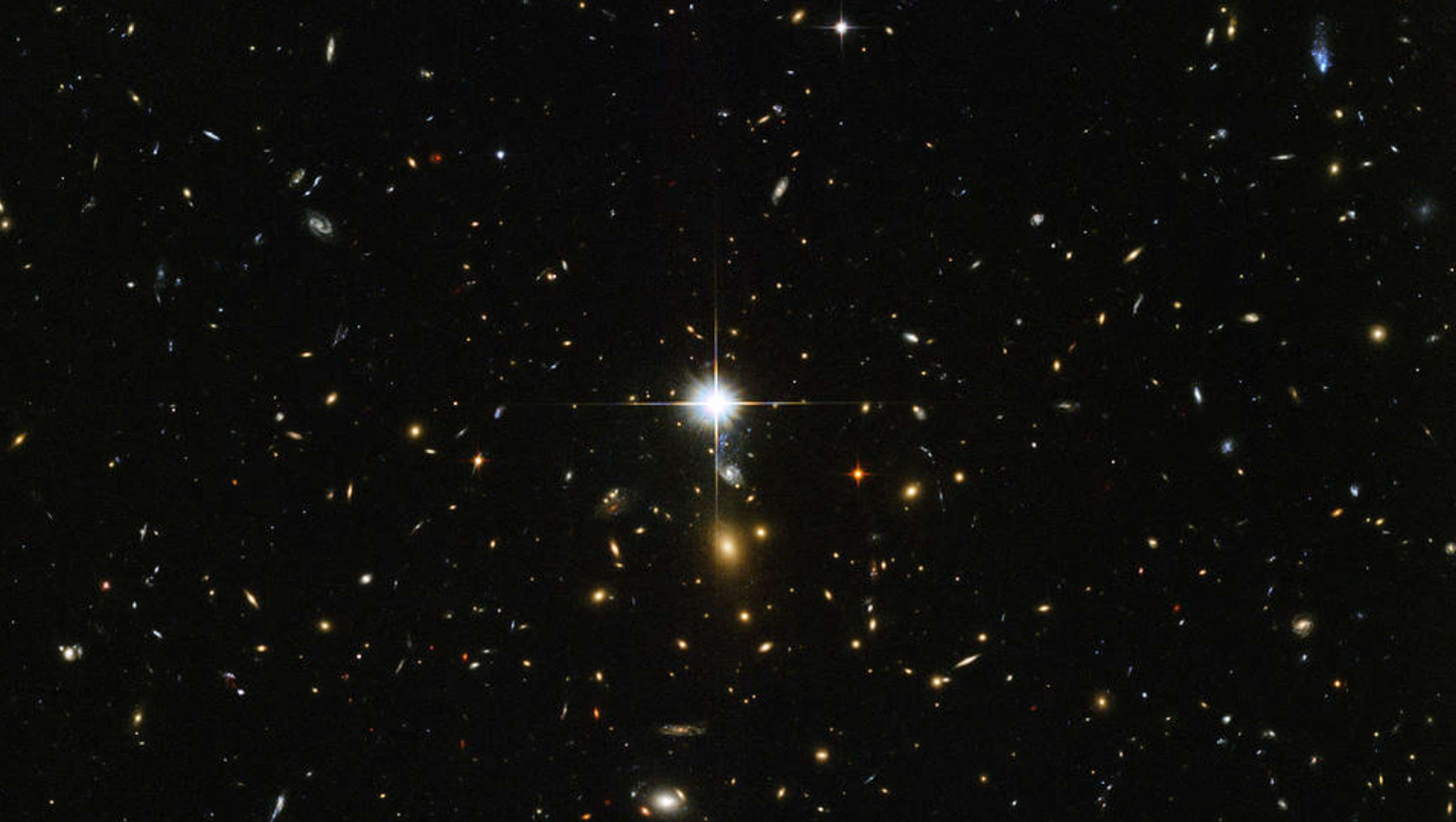Create a free profile to get unlimited access to exclusive videos, sweepstakes, and more!
Space is obviously dark, but how dark can it get?

"Space. The final frontier." The way Patrick Stewart says those words in the intro to Star Trek: The Next Generation is almost ominous, making the journey of the Enterprise seem like a venture into an impenetrable void. That voice will always give you chills.
Between the planets and stars that come out at night, space may look like a vast expanse of darkness, but it is still lit up by a background glow from stars and galaxies. This is the cosmic optical background (COB). As opposed to the invisible cosmic microwave background or CMB (leftovers from the Big Bang), the COB tells us about all the galaxies that have formed from the moment after the Big Bang to 450,000 later. These galaxies keep the universe from experiencing a total blackout.
Faraway stars and galaxies could also give us an idea of how many galaxies possibly exist—something that may tell us how dark it really is out there.
Because new research using data New Horizons spacecraft has found far fewer of these galaxies than were thought to exist, space may be darker than we thought. Unlike Hubble, which for all its far-out vision, still orbits Earth, The New Horizons Spacecraft is far away enough to really gauge the darkness of space. If it could observe Arrokoth, it can see things Hubble (which imaged distant stars above) can’t even dream of. New Horizons data has suggested the darkest reaches of space are ten times darker than the darkest areas Hubble can see. Instead of trillions of unseen galaxies, think in the realm of hundreds of billions.
“The cosmic optical background (COB) is the average flux of visible light photons averaged over the volume of the observable Universe,” said astronomer Marc Postman, who coauthored a study recently published in The Astrophysical Journal. “It reflects, at least in part, an integral over the cosmological history of star formation occur- ring in recognizable galaxies, proto-galaxies, and star clusters, as well as mass accretion by black holes.”
Even black holes keep the lights on—or at least their accretion discs, which are made mostly of glowing star stuff, do. Photons, or particles of light, swirl around the accretion disc of a black hole until they finally make it past its event horizon. This is the point of no return. There is thought to be true blackness beyond that danger zone, because not even light can escape.
The COB can be difficult to observe. Hubble’s vision is often distorted by light pollution around Earth. Either sunlight or artificial light can reflect off particles of space dust (mostly the remnants of smashed comets and asteroids), causing a glare that gets in the way of its observations, and telescopes obviously can’t squint. For something orbiting our planet, zodiacal light, or the unearthly white light that comes from between planets and emerges about an hour before dawn or after sunset, is also a nuisance. New Horizons is not as distracted by that. Any telescope or spacecraft is going to have issues with measuring the COB.
If you really want to know how bright the COB is, you have to factor out all these distractions. Doing that requires going further out from the inner solar system. This is where New Horizons is particularly useful, because it is over 4 billion miles away, where the sky can get much darker. Getting an accurate read on the COB also meant leaving out any light from galaxies thought to exist but are too faint for their existence to be confirmed. Light pollution from stars in our own galaxy was the most annoying issue for the astronomers, who had to keep it from messing with the real brightness of the COB.
It turned out that once all the other noise was cancelled out, the COB was actually pretty faint. So what actually is that light? Maybe galactic refuse. Maybe rogue stars. Maybe neither. When NASA’s James Webb Space Telescope finally takes off, it could finally give more insight into the darkness of the final frontier.


























